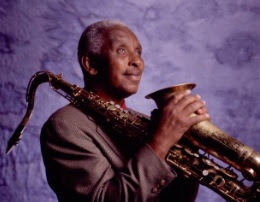Arnold Buddy Grishaver (April 30, 1926 – November 9, 2003), known professionally as Buddy Arnold, was an American jazz saxophonist.
Bronx born Buddy Arnold took up the sax at age nine and turned pro while still in his teens. At 16 years old, Arnold performed at the Apollo Theater with the Georgie Auld Orchestra with singer Billy Eckstine. At age 18 he joined the Army and led an Army Dance Band from 1944 to 1946. Following this he played with Joe Marsala, Will Osborne (singer), Herbie Fields, Buddy Rich. His first recordings were in 1949 with Gene Williams and the Junior Thornhill Band with Claude Thornhill before leaving to study music and economics at Columbia University. In 1951 he began playing again, touring with Buddy DeFranco, then worked with Jerry Wald, Tex Beneke, Elliot Lawrence, Stan Kenton, and Neal Hefti.
Here’s “Oedipus” from above album.
Finally, late in 1955 and together with fellow trumpeter Phil Sunkel, he put together his own quintet, emerging as a prominent soloist. His playing was directly inspired by Lester Young, whose style was so pervasive at the time that it became an almost universal language for many modern tenors. "Wailing" was Arnold’s only album as a leader, fronting a septet of fine musicians, who all subscribed to the premise that emotion and swing are the key and character of jazz. It was released by Paramount in 1956. He did further work for the label with Phil Sunkel.
Despite this promising album debut, his career was cut short soon after its release. Drug use was partially to blame, as it led to him going to prison for robbery for two years. In 1960 he tried to resume his career, playing and recording with Stan Kenton, who wanted to help him on his recovery. He also played with Tommy Dorsey’s ghost band. But he went back to old habits in the 1970s. In 1977 he was arrested in Pasadena, California, for falsifying prescriptions, and in 1981 a new prison sentence linked to his addictions sent him to San Quentin.
In the 1980s, he dropped out of music due to another prison sentence stemming from his addictions. Following his release from prison four months later due to a computer error, Arnold remained clean. A decade later he and his wife Carole Fields co-founded the Musician’s Assistance Program, which offered help to musicians with drug problems. In the early '90s he showed up on an album by swing revival band Love Jones, providing a touch of authenticity that is quite rare on these sorts of recordings.
 |
| Buddy and Carole Fields |
(Edited from Wikipedia, AllMusic & Liner notes)
















































